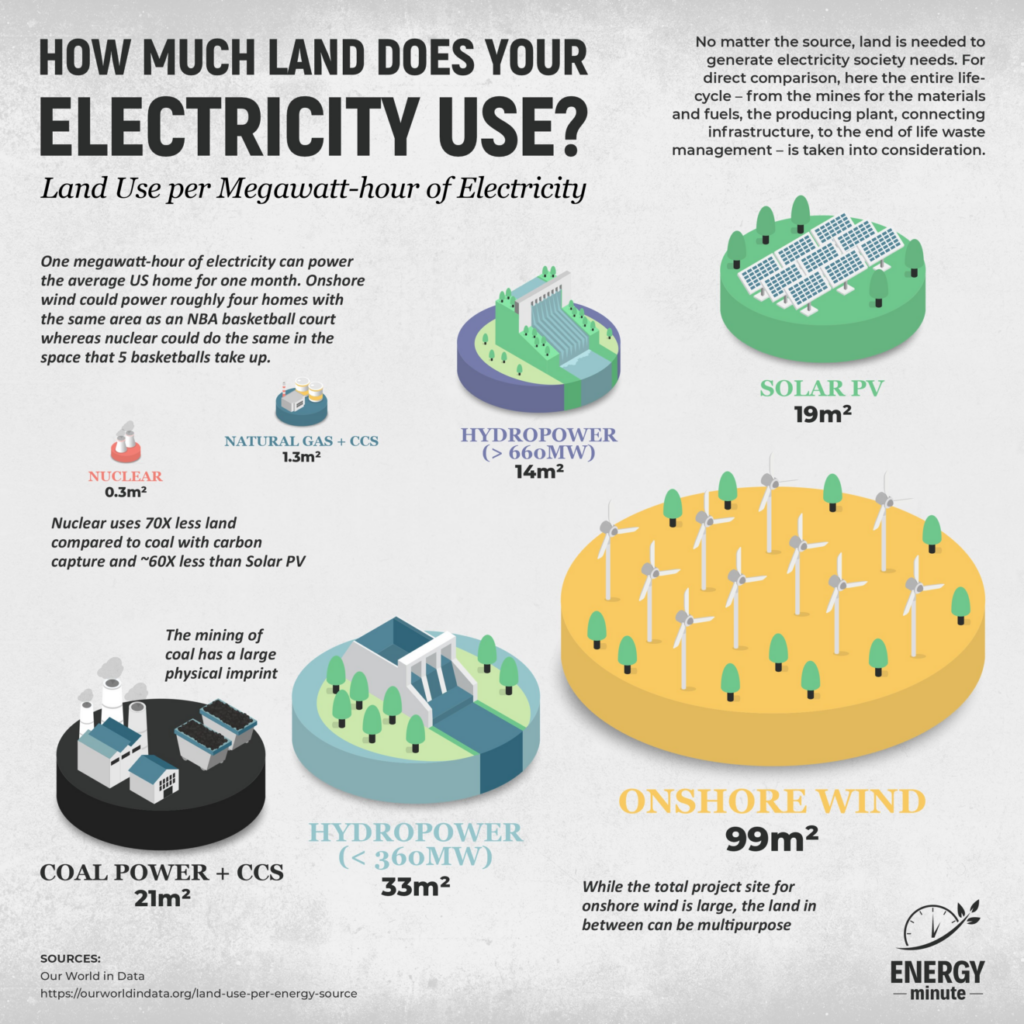
By Cody Good
Courtesy of ENERGYminute
See more articles and infographics from ENERGYminute HERE
Electricity generation is the process of converting various forms of energy into electrical energy that can be used to power homes, businesses, and industries. There are several methods of electricity generation, each with its own advantages, disadvantages, and land requirements. Here’s an overview of some common types of power generation and the land they typically require:
Fossil Fuels (Coal, Oil, Natural Gas): Fossil fuel power plants burn coal, oil, or natural gas to heat water and produce steam, which drives turbines connected to generators. Particularly coal can require a substantial amount of land for mining and fuel storage. The land requirements can vary greatly depending on the size of the plant and its location, but they generally occupy a moderate to large amount of land.
Nuclear Power: Nuclear power plants use nuclear reactions to generate heat, which is then used to produce steam and generate electricity. Despite the land required for mining uranium, nuclear typically has the smallest footprint of all sources.
Solar Power: Solar power generates electricity using photovoltaic (PV) cells that convert sunlight directly into electricity. Solar farms can vary in size and require open land or rooftops for installation. Large solar installations can cover extensive areas, but solar panels can also be installed on rooftops, reducing the need for additional land.
Wind Power: Wind turbines convert the kinetic energy of wind into electricity. They are often located on open land, hills, or offshore areas with consistent wind patterns. While individual wind turbines don’t take up much space, wind farms covering large areas are required to generate significant electricity.
Hydropower: Hydropower generates electricity using the kinetic energy of flowing water to turn turbines. Large-scale hydropower plants can have significant land requirements due to reservoirs, dams, and infrastructure. But at scale, hydropower is one of the more area efficient sources, though that area is often flooded to make a reservoir.
Geothermal Power: Geothermal power plants utilize heat from the Earth’s interior to generate steam and produce electricity. These plants usually have a relatively small land footprint, but they are limited to geothermal resource-rich areas.
Tidal and Wave Power: Tidal and wave energy capture the movement of tides or waves to generate electricity. These methods require installations in coastal areas, and while they don’t cover vast areas, they need careful positioning to harness energy effectively.
The land requirements for different power generation methods can vary widely depending on factors such as technology, capacity, efficiency, and location. Additionally, advancements in technology may lead to changes in land requirements over time as systems become more efficient and compact.
Source:
https://ourworldindata.org/land-use-per-energy-source
Share This:
Next Article



